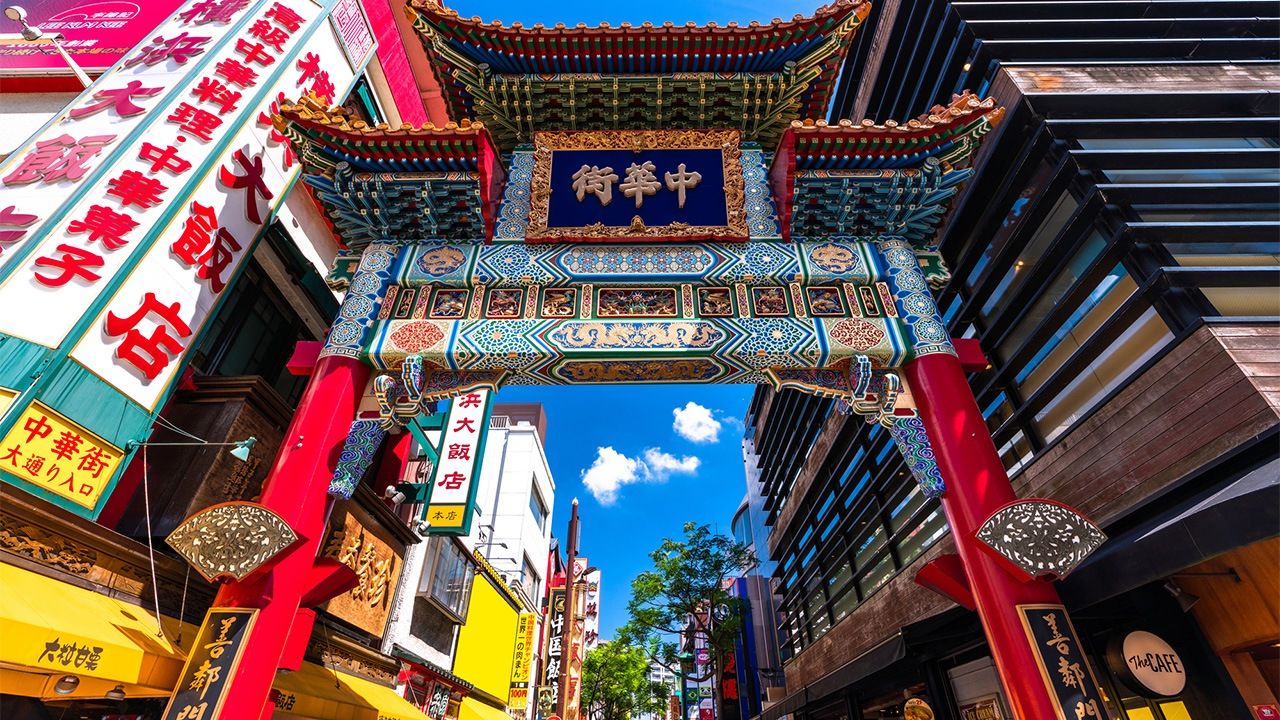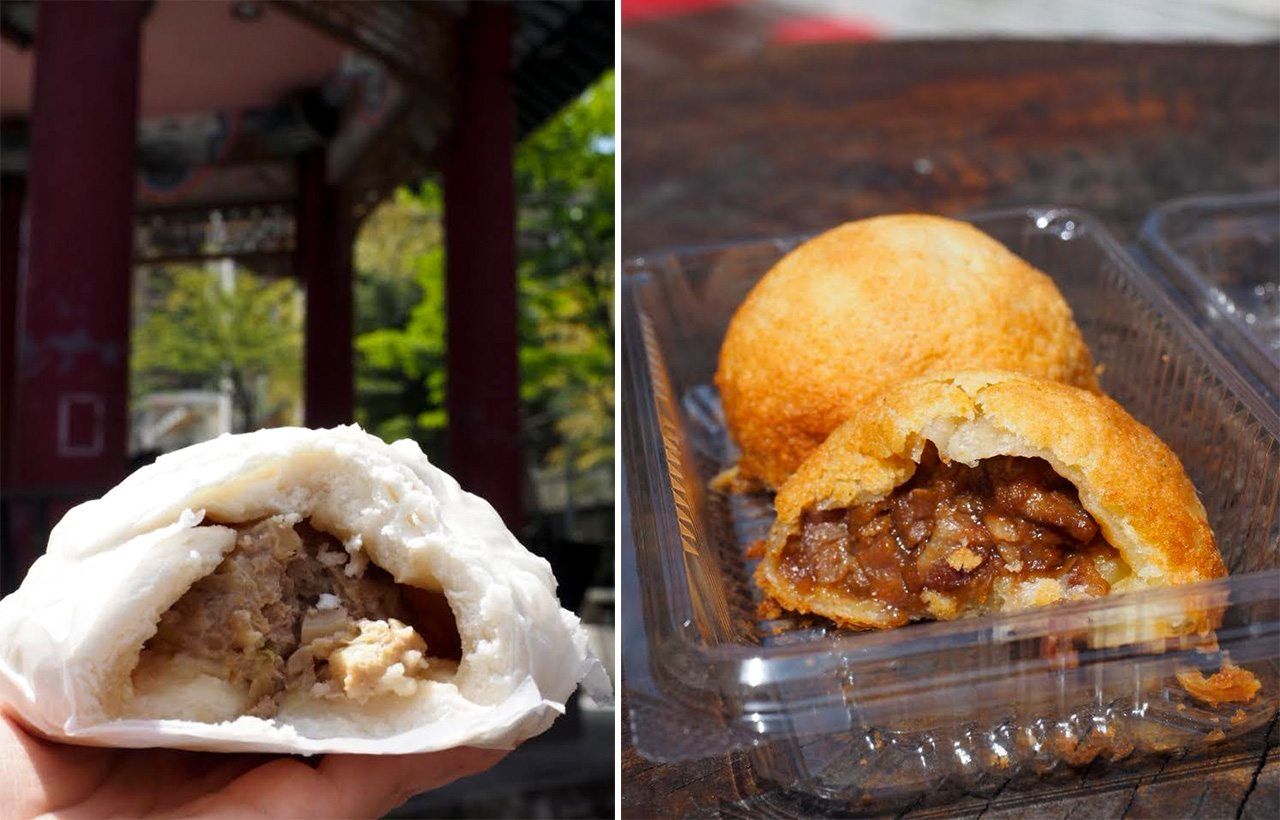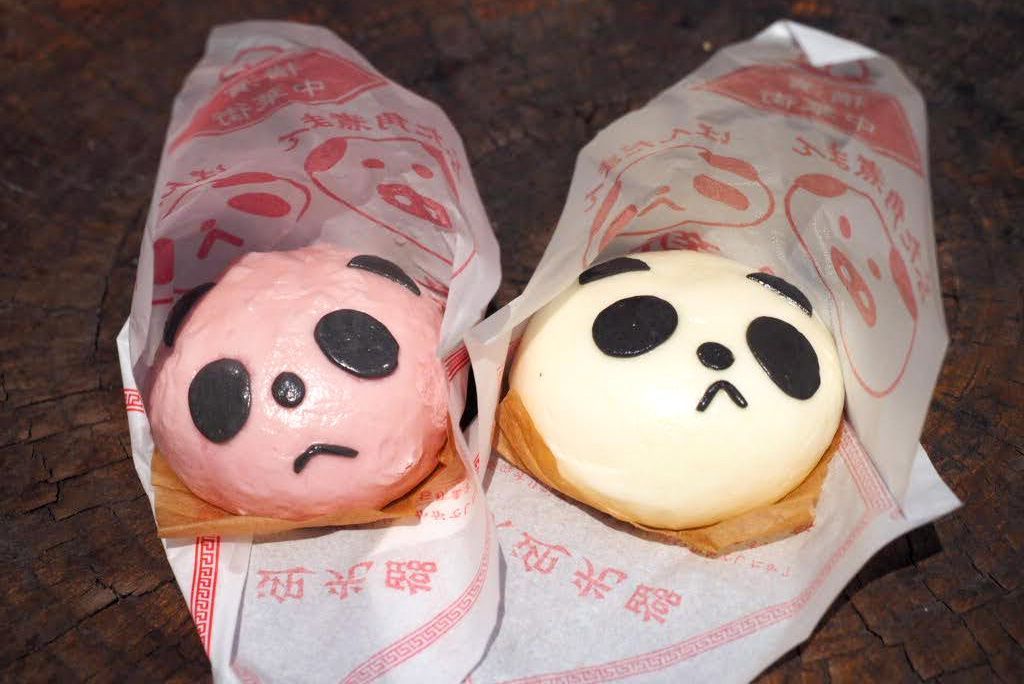
Morning Snacks in Yokohama Chinatown
Guide to Japan Culture Food and Drink- English
- 日本語
- 简体字
- 繁體字
- Français
- Español
- العربية
- Русский
Sweet and Savory Refreshments
If you visit at peak time, it is clear that the bustle is back in Yokohama Chinatown after crowds thinned out during the pandemic. When I arrived before the rush, however, at half past nine on a Thursday morning, there was still plenty of room to stroll and time to look around before the day began. Japan’s biggest Chinatown is crammed with Chinese-themed restaurants, food stalls, and souvenir stores.
At its center is Kanteibyō (Kuan Ti Miao), a temple dedicated to Guan Yu, a third-century Chinese general who came to be worshipped as a god of prosperity. Originally built in 1871, it has been reconstructed three times after suffering destruction, with the latest incarnation dating back to 1990. Different sections of the temple’s ornate decorations come from both China and Taiwan.
The celebrated food is the big draw for most visitors though. At 10:00 am, most of the stores opened for business, so I decided to try three variations on a theme, starting at Edosei, which has been operating for over a century, since 1894, and has three Chinatown outlets. Its signature product is the butaman, a generously sized steamed bun packed with pork.
Just down the street, Saiyūki adds extra sweetness to chāshū (char siu) barbecued pork by stuffing it into the popular bakery product, the meronpan (“melon bread”). I bought a pack of two chāshū meronpan (¥550) to go with my Edosei butaman (¥600). The filled buns I hoped to try at Rōishin were still being steamed, so I took the snacks I had to the nearby Yamashitachō Park.
The butaman was a package of fluffy, white steamed bun containing juicy pork, vegetables, and seafood, enough to put a hefty dent in the appetite. It was a top-class example of the genre, but the chāshū meronpan was something quite new to me. The thin, buttery crust matched well with the rich flavors of the pork, and I even felt there could have been more emphasis on the meronpan in this combination.

A butaman from Edosei (left) and chāshū meronpan from Saiyūki. (© Nippon.com)
Next, I headed back to pick up fresh pandaman from Rōishin. These steamed buns with cute panda faces were launched with a chocolate custard version, and now have varieties including pork, vegetable, and an (bean paste). I bought one original and one strawberry bun (¥380 each). The thick chocolate custard-flavored an filling had an appealing, understated sweetness, and the strawberry bun also had a light touch.

Strawberry (left) and chocolate custard pandaman draw on the appeal of China’s favorite animal. (© Nippon.com)
Yokohama Chinatown: A History
Yokohama was a small fishing village until it was designated as one of Japan’s five open ports in 1858, which was the catalyst for explosive growth. Many Western merchants started businesses in Yokohama’s foreign settlement, and needed Chinese people who could communicate with local traders through the written language. There was a population of around 1,000 Chinese residents in 1868, but as skilled workers and businessmen gradually moved to Yokohama, a Chinese community established itself in one corner of the foreign settlement.
While the foreign settlement system came to an end in 1899, laws were introduced limiting the jobs Chinese people could do outside the boundaries of these former areas. Chinese restaurants, acceptable under the law, grew in number. The population steadily increased, but Yokohama Chinatown suffered a major blow in the devastation of the Great Kantō Earthquake of 1923, which caused destruction, fires, and considerable loss of life.
In 1937, the outbreak of full-scale war between Japan and China saw some residents return to China, but many others, born and raised in Yokohama, stayed on. Hard years of wartime life culminated in the cataclysmic firebombing by Allied forces of May 1945 that left Yokohama Chinatown in ruins again. However, postwar reconstruction soon led to renewed trade ties with China.
The Zenrinmon (literally “good neighbor gate”) was constructed in 1955 with the word Chūkagai (Chinatown) written on it, naming the area officially for the first time. It is the best known of the area’s several colorful gates. Japan’s normalizing of diplomatic ties with China in 1972 brought a boom of interest in Chinese culture, and an influx of visitors. Yokohama Chinatown has since become one of the city’s biggest attractions.
(Originally written in English. Banner photo: The Zenrinmon gate in Yokohama Chinatown. © Pixta.)